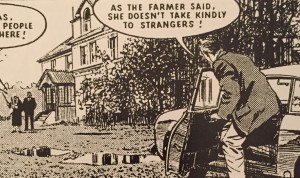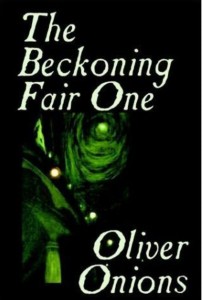![]() A literary genre which has always held a fascination and interest for Sydney has been the ghost story, particularly those dating from what might be considered its Golden Age ; that is the late nineteenth and early twentieth century. During a recent conversation on this subject , Sydney brought to mind a host of authors from this period in which most of the modern tropes for the genre were established. One need think only of the terrifying banality of the phantom protagonists of “The turn of the screw” or the subtle interweaving of memory and lost love in James joyce’s short story masterpiece ‘The Dead” to see this high- watermark of the ghost story.
A literary genre which has always held a fascination and interest for Sydney has been the ghost story, particularly those dating from what might be considered its Golden Age ; that is the late nineteenth and early twentieth century. During a recent conversation on this subject , Sydney brought to mind a host of authors from this period in which most of the modern tropes for the genre were established. One need think only of the terrifying banality of the phantom protagonists of “The turn of the screw” or the subtle interweaving of memory and lost love in James joyce’s short story masterpiece ‘The Dead” to see this high- watermark of the ghost story.
Among those who Sydney cites as an influence on his own creativity are the works of M.R.James and an Edwardian novella “ The beckoning fair one” by Oliver Onions, now forgotten, but in its day a best-selling work.
The one story in the Hawke series that may be said to truly conform to the structure of the classic ghost story is “Ghost Errant” in which a spectral squadron of Sopwith Camels appear in the English skies.
Sydney’s recollection is that the very germ of the story came to him back in the sixties when he was touring the Sussex countryside looking for a suitable property to buy for his young family. He describes that while driving he came upon a large house, once grand but now fallen into ruin and disrepair. Keen to investigate further, he entered the building to explore its crumbling interior. He described the house as being heavy with its own memories , and the feelings evoked brought to mind “The beckoning fair one”, and this elision formed what was to become GHOST ERRANT.
In both stories, the central feature is a house that contains a presence that seeks for a lost love. In “The beckoning fair one” the protagonist Paul Oleron rents an old disused property in order to complete a novel that he has been writing for many years. He gradually becomes more reclusive as the house exerts its baleful influence upon him and we discover eventually that a ghostly female presence lurks there , desperate to entrap the occupant as a replacement for a long lost love. We learn that the previous tenant, an artist was found starved to death in the house, a previous victim of the spectral presence. Oleron becomes increasingly detached from the world as the jealous succubus claims him for herself . Although he does not die in the house , he becomes deranged by the spirit and commits murder for which he is bound to be hanged.

In GHOST ERRANT the presence seeking her lost love is more benign, taking the form of an elderly lady Mrs Millyard ,who after more than forty years still mourns for her husband , a pilot killed in the great war. Hawke himself is more of a witness or bystander in this story, the main protagonist being Andrew Davenant , a pilot friend who first alerts Hawke to the ghostly squadron of Sopwith camels that he has observed while flying his light aircraft. Oleron in Onions’ novella is continually drawn back to the old house by the possessions of his ghostly lover that he discovers, like the harp in the window box; Davenant is continually drawn back to the house at White Edgley , firstly by the ghostly biplanes and then by the revelation that she has the remains of her husband’ s machine which he and Hawke set out to have rebuilt. In both cases the protagonists are willingly drawn into a web from which the only outcome will be their doom.
Both the ghostly female presence in “Fair one” and Mrs Millyard have a desire to bring back their lost love

and in both cases the outcome is fatal. Oleron becomes a deranged madman facing a death sentence whereas Davenant cheerfully follows his own inexorable fate by flying the re-built bi-plane and suffering the same disaster as its original pilot – a fatal crash which somehow gives the old lady a closure and a peace of mind. Sydney and Willie Patterson subtley reworked this story but created the sympathetic presence of mrs Millward rather than the malign phantom in “Fair one” . This gives GHOST ERRANT a new dynamic, an atmosphere of bitter sweet nostalgia rather than the sickly claustrophobic ambience of “Fair One”. In the Hawke story, despite the fatal outcome, the reader’s s sympathy for the lady is evoked. The quote from Milton uttered by Hawke in the strip , is from LYSIDAS, an elegy for a friend , Edward King, a poet and writer, cut off before achieving his full potential. Was this Sydney’s nod to Oleron , also a writer cut off before his great work was complete ?
Skipper Prossitt
